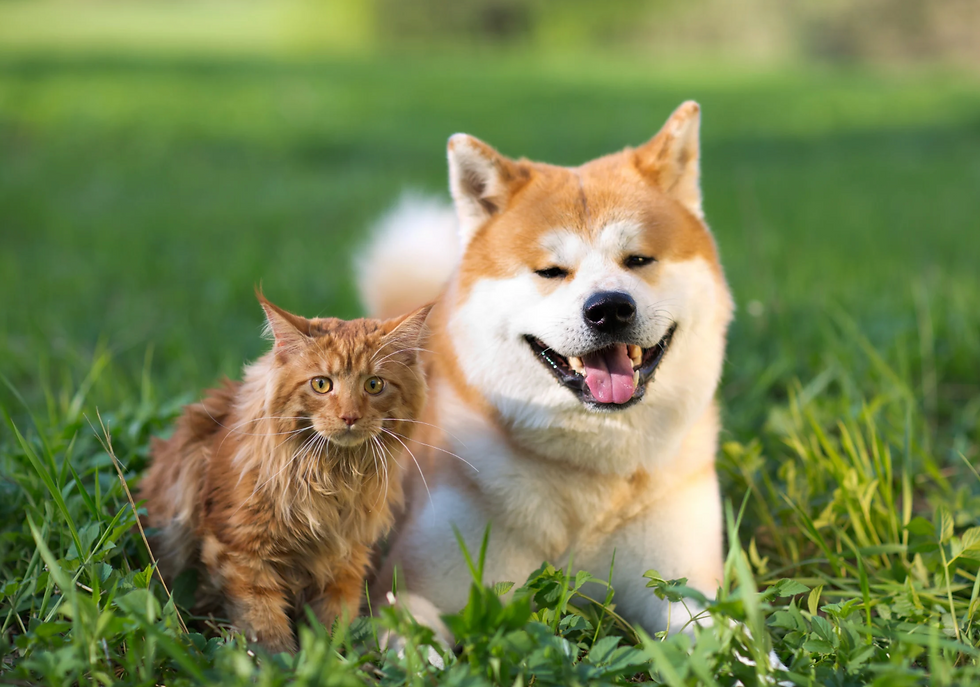Tips for when your pet isn’t eating : A guide for pet owners
- folse8
- May 28, 2024
- 3 min read

As a pet owner, one of the most concerning situations is when they refuse to eat. Whether it's a dog, cat, rabbit, or any other pet, a lack of appetite can signal various issues, ranging from minor to severe. Here's a guide to help you navigate this worrying scenario and ensure your pet returns to their happy, healthy self.
1. Observe and Identify the Problem
The first step is to closely observe your pet's behavior and try to identify any potential reasons for their lack of appetite. Consider the following factors:
Recent Changes: Have there been any changes in their environment, routine, or diet?
Health Symptoms: Are there other symptoms present, such as vomiting, diarrhea, lethargy, or changes in behavior?
Dental Issues: Check if your pet is having trouble chewing, which could indicate dental pain.
Age and Breed: Some pets, especially as they age or depending on their breed, may experience changes in appetite naturally.
2. Ensure Fresh and Appealing Food
Just like humans, pets can be particular about their food. Here are a few tips to make their meals more appealing:
Fresh Food: Always provide fresh food. Discard any uneaten food and clean their bowl regularly.
Warm It Up: Warming up wet food can enhance its aroma, making it more enticing.
Flavor Enhancers: Consider adding a bit of low-sodium broth, fish oil, or a small amount of their favorite treat to their food.
Variety: Sometimes pets simply get bored of their food. Try offering a different flavor or type of food.
3. Create a Stress-Free Environment
Pets are sensitive to their surroundings. A calm and quiet feeding area can encourage them to eat.
Routine: Maintain a consistent feeding schedule.
Safe Space: Ensure their feeding area is free from loud noises and disruptions.
Solo Dining: If you have multiple pets, feeding them separately might reduce stress and competition.
4. Monitor for Health Issues
If your pet continues to refuse food, it's crucial to rule out any underlying health issues. Here’s what you can do:
Veterinary Visit: Schedule a check-up with your vet to ensure there are no medical problems. This is especially important if your pet exhibits other symptoms or if their lack of appetite persists for more than a day or two.
Hydration Check: Ensure your pet is drinking water. Dehydration can exacerbate health problems and reduce appetite.
Regular Monitoring: Keep track of their eating habits, weight, and overall behavior to provide your vet with detailed information.
5. Special Considerations for Specific Pets
Different types of pets may have unique needs and reasons for not eating:
Dogs: Dogs might refuse food due to anxiety, dietary changes, or after eating something they shouldn't have. Consult your vet for a proper diagnosis.
Cats: Cats are known to be finicky eaters. Even minor changes can cause them to stop eating. Long-term anorexia in cats can lead to hepatic lipidosis, a serious liver condition, so prompt action is needed.
Small Mammals: For rabbits, guinea pigs, and other small mammals, not eating can be a sign of dental problems or gastrointestinal issues. Immediate veterinary care is essential as these pets can deteriorate quickly.
When your pet is not eating, it can be a stressful experience, but with patience and careful observation, you can often identify and resolve the issue. Always prioritize your pet’s health by consulting with a veterinarian if the problem persists or if you notice any additional symptoms. Remember, your attentiveness and care are crucial to ensuring your pet's well-being and happiness.




Comments